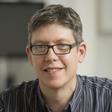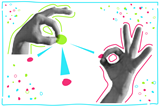Help students make meaningful connections when learning about covalent bonding models and concepts
Chemical bonding is a fundamental concept that underpins knowledge about structure, properties, interactions and reactions. Research has revealed that students experience many challenges getting to grips with this topic. They tend to think covalent bonding involves electron transfer and ionic bonding involves electron sharing. They also struggle with ideas relating to molecular shape, bond polarity and molecule polarity. And students often apply the octet rule to explain bonding.
Chemical bonding is a fundamental concept that underpins knowledge about structure, properties, interactions and reactions. Research has revealed that students experience many challenges getting to grips with this topic. They tend to think covalent bonding involves electron transfer and ionic bonding involves electron sharing. They also struggle with ideas relating to molecular shape, bond polarity and molecule polarity. And students often apply the octet rule to explain bonding.
Researchers from two US universities investigated their students’ understanding of bonding in a recent study. Over the course of a year they found that pupils persistently described ionic compounds using covalent bonding ideas. The researchers considered what this meant for their instruction and curriculum.
Teaching tips
- Discuss the limits of the covalent bonding model explicitly with students. Present examples of substances where the model is not applicable, so students are able to identify where a different model is necessary.
- Use assessments that require students to distinguish between covalent, ionic and metallic substances before applying VSEPR theory to determine the molecular geometry of the covalent substances.
- Try creative exercises similar to those used in the study (ie asking students to write as many factual statements as they can about SCl2 and CaCl2) to assess students’ grasp of models and concepts.
- Create exercises that mix questions from the topic currently being studied and from previous topics to avoid the siloed presentation and assessment of topics, and help students make meaningful cross-curriculum connections.
There were 58 students from the University of New Hampshire and the University of Florida involved in the study. They completed creative exercises after their second semester general chemistry courses, after another six months and then after a year. Creative exercises are like concept maps. They start with a prompt and students respond with as many distinct, accurate and relevant statements as they can. This shows what information and relationships students think are related to the prompt.
There were 58 students from the University of New Hampshire and the University of Florida involved in the study. They completed creative exercises after their second semester general chemistry courses, after another six months and then after a year. Creative exercises are like concept maps. They start with a prompt and students respond with as many distinct, accurate and relevant statements as they can. This shows what information and relationships students think are related to the prompt.

The prompts asked students to write down as many distinct factual statements as they could about a molecule of SCl2 and the compound CaCl2. The researchers accepted diagrams as well as written statements and provided students with electronegativity values for the elements. The research team deliberately selected unfamiliar examples, rather than water or sodium chloride, to avoid a reliance on rote recall.
The research uncovered a persistent application of covalent bonding ideas to the ionic compounds. At the start, 88% of students described SCl2 and 58% described CaCl2 using a covalent model. Only 5% of students suggested a purely ionic model for CaCl2, and 33% used a mixture of covalent and ionic models. When applying the covalent model to describe CaCl2, some students used VSEPR theory to predict a linear or bent geometry, and drew displayed formulas or Lewis dot structures showing Ca–Cl bonds. After a year, 21% of students’ responses indicated an ionic model for CaCl2, and 42% still used a covalent model.
These results suggest that covalent bonding is a robust conceptual framework for students. The researchers propose that the curriculum did not provide time for students to develop a strong explanatory model for ionic bonding. They also pointed to other research that argues classroom and textbook explanations leave bonding open to interpretation. This makes it difficult for students to make meaningful connections.
David Read
Reference
K A Bowe et al, J. Chem. Educ., 2022, 99, 8, 2808–2820 (DOI: 10.1021/acs.jchemed.2c00188)
References
K A Bowe et al, J. Chem. Educ., 2022, 99, 8, 2808–2820 (DOI: 10.1021/acs.jchemed.2c00188)














No comments yet